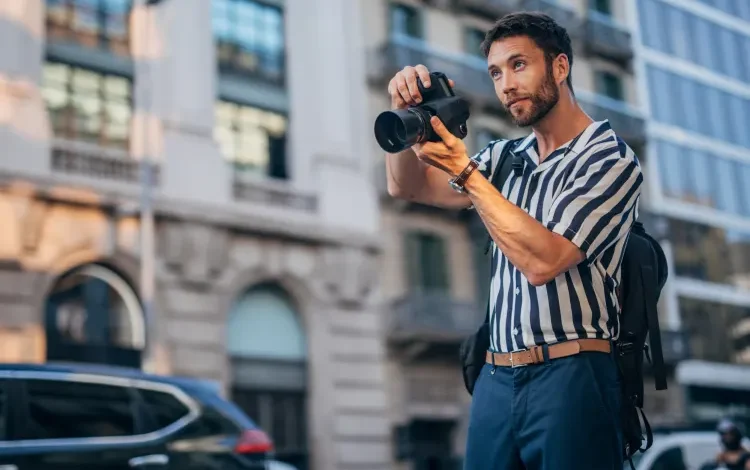
Photography is more than just capturing images; it is an art form, a storytelling medium, and a powerful way to preserve memories. Over the years, photography has evolved from film-based cameras to highly sophisticated digital systems, opening up new possibilities for both professional photographers and hobbyists. Whether your goal is to document everyday life, explore creative expression, or build a career, understanding the fundamentals of photography is essential.
The Evolution of Photography
Photography has a rich history, beginning in the early 19th century with the invention of the camera obscura and chemical-based image capturing. Over time, technological advancements led to film cameras, instant cameras, and eventually digital photography. Today, high-resolution digital cameras, smartphones, and drones allow photographers to experiment with new techniques, including HDR, panoramic shots, and aerial photography.
The transition to digital photography has made the process more accessible, allowing instant review, post-processing, and sharing on social media platforms. This evolution has democratized the field, enabling anyone to explore photography as a hobby or professional pursuit.
Understanding the Basics of Photography
Photography is a combination of technical knowledge and creative vision. The key elements every photographer should understand include:
1. Exposure: Exposure determines how light or dark an image appears. It is controlled by three main components:
- Aperture: The opening of the camera lens that regulates light intake. Larger apertures allow more light and create a shallow depth of field.
- Shutter Speed: Controls the duration the camera sensor is exposed to light. Faster speeds freeze motion, while slower speeds create motion blur.
- ISO: Adjusts the camera’s sensitivity to light. Higher ISO values are useful in low-light conditions but can introduce digital noise.
2. Composition: Composition refers to the arrangement of elements within a photograph. Techniques such as the rule of thirds, leading lines, symmetry, and framing help create visually appealing images.
3. Lighting: Light is one of the most critical aspects of photography. Understanding natural and artificial lighting, direction, intensity, and color temperature helps enhance the mood and clarity of images.
4. Focus and Depth of Field: Proper focus ensures the main subject is sharp, while depth of field controls the background blur, adding emphasis and artistic effect.
Essential Photography Equipment
While creativity is key, having the right tools significantly impacts image quality and versatility. Essential photography equipment includes:
- Cameras: DSLR and mirrorless cameras are popular for their flexibility, image quality, and interchangeable lenses. Point-and-shoot cameras and smartphones are convenient for casual photography.
- Lenses: Different lenses serve specific purposes. Wide-angle lenses capture landscapes, telephoto lenses are ideal for wildlife, and prime lenses provide sharp images with large apertures.
- Tripods: Essential for stability in long exposures, low-light conditions, and landscape photography.
- Lighting Gear: Reflectors, diffusers, and external flashes help control and enhance lighting.
- Accessories: Memory cards, camera bags, cleaning kits, and lens filters improve convenience and protect equipment.
Types of Photography
Photography encompasses diverse genres, each with unique techniques and challenges:
1. Portrait Photography
Portrait photography focuses on capturing the personality, mood, and expression of individuals or groups. It requires effective lighting, composition, and post-processing to highlight features and evoke emotion. Studio setups or natural light can be used depending on the desired style.
2. Landscape Photography
Landscape photography captures outdoor scenes, emphasizing natural beauty, weather, and lighting conditions. Wide-angle lenses, low ISO settings, and careful attention to composition and depth are crucial for stunning results.
3. Wildlife Photography
Wildlife photography involves capturing animals in their natural habitats. It demands patience, specialized telephoto lenses, fast shutter speeds, and knowledge of animal behavior. Ethical considerations, such as avoiding disturbance, are paramount.
4. Street Photography
Street photography documents everyday life, urban culture, and candid moments. It requires observation, quick reflexes, and storytelling skills to capture authentic scenes. Compact cameras and smartphones are popular tools for this genre.
5. Macro Photography
Macro photography focuses on extreme close-ups of small subjects like insects, flowers, or textures. Macro lenses and careful lighting techniques allow photographers to reveal intricate details invisible to the naked eye.
6. Event and Wedding Photography
Event photography involves capturing memorable moments during weddings, parties, or corporate events. Photographers must anticipate key moments, adapt to changing light conditions, and manage candid and posed shots efficiently.
Post-Processing in Photography
Post-processing is an integral part of modern photography, enhancing images and correcting imperfections. Popular software includes Adobe Photoshop, Lightroom, and free alternatives like GIMP.
Common post-processing techniques:
- Adjusting exposure, contrast, and white balance
- Cropping and straightening images
- Removing unwanted elements or blemishes
- Enhancing colors and sharpness
- Applying creative filters or effects
While post-processing enhances images, the goal should always be to maintain a natural and authentic representation unless artistic expression dictates otherwise.
Tips for Improving Photography Skills
Becoming a skilled photographer requires continuous practice, observation, and experimentation. Here are some tips:
- Learn Your Equipment: Understand camera settings, modes, and lens options to maximize control.
- Practice Regularly: Shoot in different lighting conditions, environments, and genres.
- Study Other Photographers: Analyze compositions, styles, and techniques from professionals.
- Experiment with Angles: Try unique perspectives to create interest and originality.
- Join Photography Communities: Online forums, social media groups, and workshops provide feedback and inspiration.
- Keep Learning: Attend courses, read articles, and follow photography trends to stay updated.
The Impact of Photography
Photography is more than a creative hobby; it has social, cultural, and professional significance. Photographs preserve history, convey messages, and evoke emotions. Photojournalists document global events, while commercial photographers influence marketing and advertising. Photography also plays a vital role in scientific research, wildlife conservation, and education.
Frequently Asked Questions (FAQs)
1. What is the best camera for beginners?
For beginners, mirrorless cameras or entry-level DSLRs provide flexibility, image quality, and manual control without being overly complex.
2. How can I improve my photography composition?
Use techniques such as the rule of thirds, leading lines, symmetry, and framing. Observing professional photography and practicing regularly also improves composition skills.
3. Is post-processing necessary for good photography?
While not mandatory, post-processing enhances image quality, corrects exposure, and allows creative expression. Minimal adjustments often yield the best results.
4. How do I choose the right lens for my photography style?
Consider the subjects you photograph: wide-angle for landscapes, telephoto for wildlife, prime lenses for portraits, and macro lenses for detailed close-ups.
5. Can I become a professional photographer using a smartphone?
Yes, smartphones with high-resolution cameras and editing apps can produce professional-quality images, especially for social media, events, or commercial work.
6. How important is lighting in photography?
Lighting is crucial, as it affects exposure, mood, and clarity. Understanding natural and artificial light, shadows, and highlights significantly improves image quality.
7. What are common mistakes beginners make in photography?
Common mistakes include overexposure, poor composition, relying solely on auto mode, neglecting focus, and not experimenting with different angles or lighting conditions.
8. How can I preserve my digital photographs long-term?
Use multiple storage solutions, including external hard drives, cloud storage, and organized backup systems. Save in high-quality formats like RAW or TIFF for longevity.


